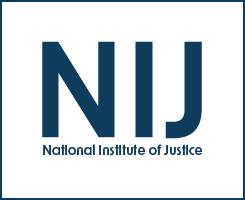Evidence analysis
Expanding Social Science Research to Examine the Impacts of Forensic Science on the Criminal Justice System
Event Dates
–
Eastern
Location
Online
Event Type
Webinar
Registration Status
Not Required
Analysis of Small Particles Adhering to the Edges of Duct Tape as a Means to Make Associations in a Way that is Independent of Manufactured Characteristics
2020-MU-CX-0018
Closed
Funding First Awarded
2020
$871,366
Sex-Based Targeted Recovery of Cells in a Heterogeneous Mixture: Separating Male and Female Like Cells
2020-DQ-BX-0019
Closed
Funding First Awarded
2020
$153,333
Accounting for Covariates in Forensic Error Rate Assessment and Evidence Interpretation
2019-DU-BX-4011
Closed
Funding First Awarded
2020
$495,056
Selectively analyzing and interpreting DNA from multiple donors with a full Single-Cell strategy
2020-R2-CX-0032
Closed
Funding First Awarded
2020
$142,986
A Virtual Anthropological Approach to the Study of Commingled Human Remains
2020-R2-CX-0025
Closed
Funding First Awarded
2020
$138,704
The Lethality Screen: The Predictive Validity of an Intimate Partner Violence Risk Assessment for Use by First Responders
Journal
Journal of Interpersonal Violence
Date Published
2017
Agencies
NIJ-Sponsored
Publication Type
Research (Applied/Empirical)
Improving Crime Lab Evidence Analysis and Efficiency in Utah in Support of DNA/Biology, Chemistry/Trace, Firearms and Impression Casework
Date Published
January 2005
Agencies
NIJ-Sponsored
Publication Type
Program/Project Description
Does Evidence Really Matter? An Exploratory Analysis of the Role of Evidence in Plea Bargaining in Felony Drug Cases
Journal
Law and Human Behavior
Date Published
October 2015
Agencies
NIJ-Sponsored
Publication Type
Research (Applied/Empirical)
Critical Review of Forensic Trace Evidence Analysis and the Need for a New Approach
Journal
Forensic Science International
Date Published
June 2015
Agencies
NIJ-Sponsored
Publication Type
Research (Applied/Empirical)
Toward Locard's Exchange Principle: Recent Developments in Forensic Trace Evidence Analysis
Journal
Analytical Chemistry
Date Published
November 2018
Agencies
NIJ-Sponsored
Publication Type
Report (Technical Assistance),
Report (Grant Sponsored),
Program/Project Description
Integrated Sample Cleanup and Capillary Array Electrophoresis Microchip for Forensic Short Tandem Repeat Analysis
Journal
Forensic Science International: Genetics
Date Published
November 2011
Agencies
NIJ-Sponsored
Publication Type
Report (Study/Research)
Characterization of Firearm Discharge Residues Recovered From Skin Swabs Using Sub-micrometric Mass Spectrometry Imaging
Journal
Analytical Methods
Date Published
2016
Agencies
NIJ-Sponsored
Publication Type
Research (Applied/Empirical)
Exploitation of Very Small Particles To Enhance the Probative Value of Carpet Fibers
Journal
Forensic Science International
Date Published
July 2015
Agencies
NIJ-Sponsored
Publication Type
Research (Applied/Empirical)
PLM/Microprobe: An Electron Microprobe for Use on a Light Microscope Stage Designed for Trace Evidence Analysis: Final Report
Date Published
1998
Agencies
NIJ-Sponsored
Chromosomal Duplications Along the Y-Chromosome and Their Potential Impact on Y-STR Interpretation
Journal
Journal of Forensic Sciences
Date Published
July 2005
Agencies
NIJ-Sponsored
Publication Type
Report (Study/Research)
Lethality Screen: The Predictive Validity of an Intimate Partner Violence Risk Assessment for Use by First Responders
Journal
Journal of Interpersonal Violence
Date Published
May 2015
Agencies
NIJ-Sponsored
Publication Type
Test/Measurement,
Research (Applied/Empirical)
New Mexico: Forensic DNA Laboratory Improvement Program; Final Report
Date Published
1998
Agencies
NIJ-Sponsored
DNA Solves Property Crimes (But Are We Ready for That?)
Journal
NIJ Journal
Date Published
October 2008
Agencies
NIJ
Publication Type
Research (Applied/Empirical)
Nondestructive Total Excitation-Emission Fluorescence Microscopy Combined With Multi-Way Chemometric Analysis for Visually Indistinguishable Single Fiber Discrimination
Journal
Analytical Chemistry
Date Published
March 2016
Agencies
NIJ-Sponsored
Publication Type
Research (Applied/Empirical)
Microbial Degradation of Gasoline in Soil: Effect of Season of Sampling
Journal
Forensic Science International
Date Published
June 2015
Agencies
NIJ-Sponsored
Publication Type
Research (Applied/Empirical)


